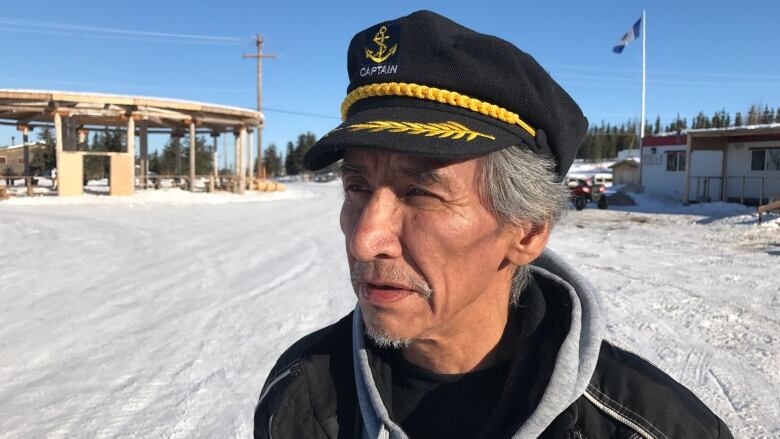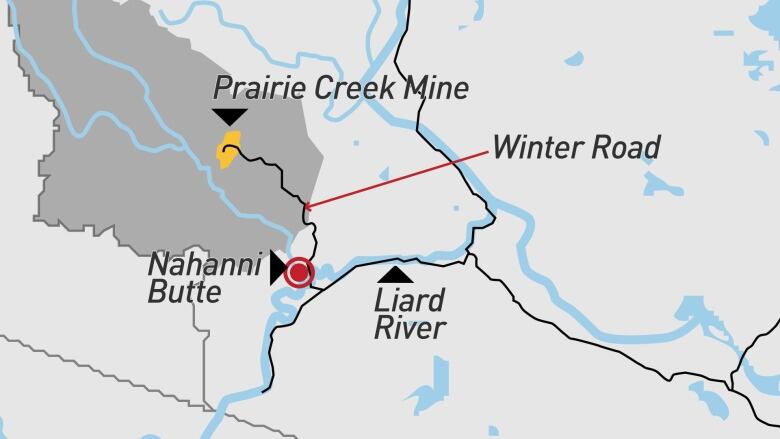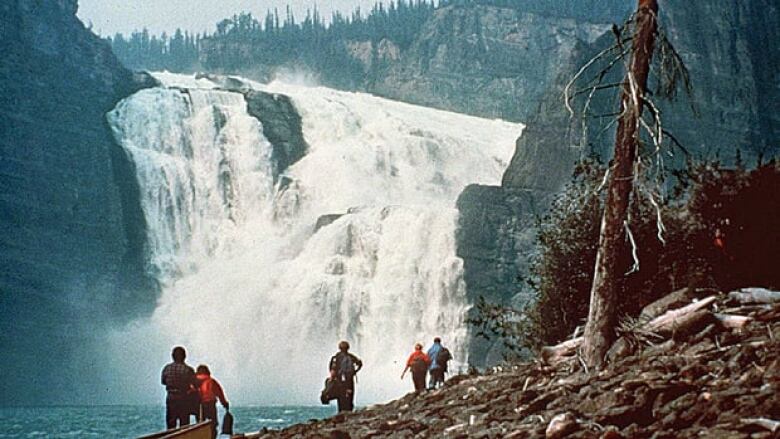Today's trapline could eventually open road to Nahanni National Park
Nahanni Butte Dene Band to revive traditional trapline along proposed all-season road

The Nahanni Butte Dene Band will lay out a traditional trapline this winter following the proposed route of an all-season road to the Prairie Creek Mine.
Peter Marcellais, chief of the Nahanni Butte Dene Band, said the main reason to develop the 80-kilometer trapline is to allow elders to pass down traditional knowledge to youth in the community.
"We need to teach our kids how we used to go trapping," he said. "While they're out there cutting the line there will be elders there with them to show them how to skin and how to be self-sufficient in the bush."
The youth will get first hand experience, and they'll earn money selling hides, he said.
But the experience on the land will have a benefit for industry as well. While community members are buildingthe trapline, they'll also be developing the kind of baseline data that could figure into a major road building project.
The proposed all-season road to the Prairie Creek mine happens to follow a traditional community trapping route, Marsellais said.

"We did have a trail through there way back it was before my time anyway there's a trail there the elders know, so that's what we're going to follow."
Mark Pocklington, SAO for the Nahanni Butte Dene Band, said similar work they did on the land last summer turned out to be useful to Canadian Zinc, the proponent behind the Prairie Creek mine.
"We were able to determine with Canadian Zinc that their original proposed route needed to be changed because it was going into swampy areas," Pocklington said. "They were able to change the route. It makes a big difference when our people are on the land rather than doing surveys from the air or using Google maps."
Tourism potential
Access to NahanniNational Park is expensive and limited. There are no public roads into the park, or even close to the park boundary. Most visitors rely on floatplanes or helicopters to get in.
The trapline, and an eventual all-season road could change that.

The 80-kilometre stretch of trapline will just about reach the boundary of the park, and will pass a proposed area for a youth camp at Second Gap, an area about 60 kilometres down the trapline.
Pocklington said funding for the youth camp at Second Gap is part of the impact benefit agreement the band is negotiating with Canadian Zinc.
"It's a fantastic hiking area, some of it is above the treeline," Pocklington said. He described the area as stunning in its natural beauty, with mountains, running rivers and mountain hiking that for now remains accessible only by helicopter.
"It's a way to open up the park not just to youth but to the public."
The route will begin where earlier this summer the band cleared about 12 kilometres of deactivated logging road, something which raised eyebrows inside the territorial government, which turned to the courts to stop the work.
The band doesn't expect to run into regulatory hangups with the trapline this winter, or during work next summer to clear it and make it wide enough for all-terrain-vehicles. Pocklington said the community trapline project falls below the construction threshold that would trigger the need for regulatory oversight, and will all be contained within Indian Affairs Branch land.
In the long run, Pocklington said the construction of the all-season road still faces a number of regulatory and jurisdictional hurdles not least of which is the Deh Cho land claim process as well as Canadian Zinc finding the financing to back construction.
Most of this is outside the control of the community of about 100.
"In the meantime, we're moving ahead and setting up our trapline," Pocklington said. "It reaffirms our sovereignty over the land."












_(720p).jpg)


 OFFICIAL HD MUSIC VIDEO.jpg)
.jpg)



























































































